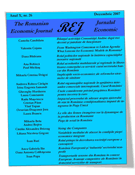Abstract:
Romania has represented a successful destination within the international tourism; it had an internal tourism based on a legal framework (the Law of tourism) ever since the inter-war period. The significant development of the accommodation capacities was achieved in the early ‘60s, especially on the Black Sea littoral. In the ‘70s Romania was an important tourism destination for Germany, Great Britain, the Scandinavian countries, France, Italy, Austria, and Belgium. After 1980 Romania was confronted with a strong decline of the number of foreign tourists, and this tendency was maintained till the ‘90s caused by the lack of funds for investments meant for development, by the slow and complicated privatization process, by applying inadequate fiscal obligations, by the lack of some facilities in the field of the banking credits. Taking the example of the developed countries where tourism participates with a very important percentage to the national wealth, Romania strives to reinstate an economic field with real chances of development and to turn tourism into the prosperous industry that can compensate the losses caused by rhythm and substance in the other economic branches. Romania has resources to achieve a high quality tourism.
